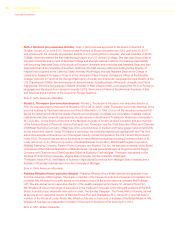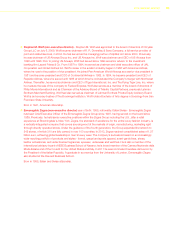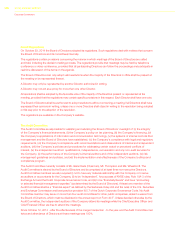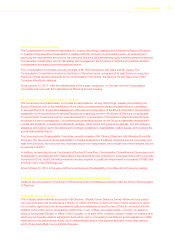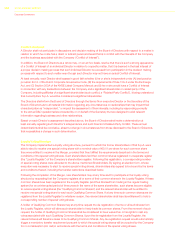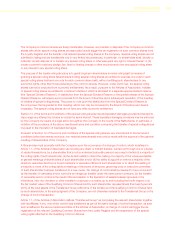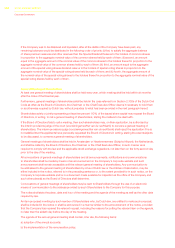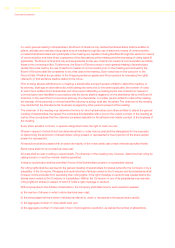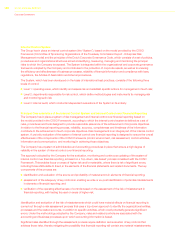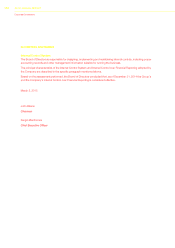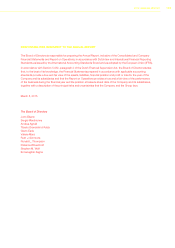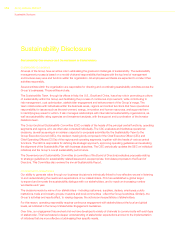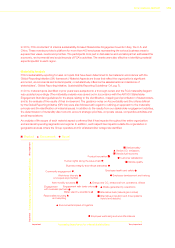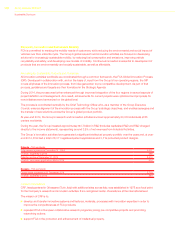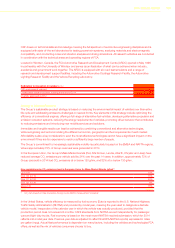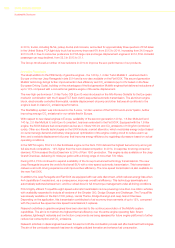Chrysler 2014 Annual Report Download - page 110
Download and view the complete annual report
Please find page 110 of the 2014 Chrysler annual report below. You can navigate through the pages in the report by either clicking on the pages listed below, or by using the keyword search tool below to find specific information within the annual report.
108 2014 | ANNUAL REPORT
Corporate Governance
Internal Control System
The Group has in place an internal control system (the “System”), based on the model provided by the COSO
Framework (Committee of Sponsoring Organizations of the Treadway Commission Report - Enterprise Risk
Management model) and the principles of the Dutch Corporate Governance Code, which consists of a set of policies,
procedures and organizational structures aimed at identifying, measuring, managing and monitoring the principal
risks to which the Company is exposed. The System is integrated within the organizational and corporate governance
framework adopted by the Company and contributes to the protection of corporate assets, as well as to ensuring
the efficiency and effectiveness of business processes, reliability of financial information and compliance with laws,
regulations, the Articles of Association and internal procedures.
The System, which has been developed on the basis of international best practices, consists of the following three
levels of control:
Level 1: operating areas, which identify and assess risk and establish specific actions for management of such risk;
Level 2: departments responsible for risk control, which define methodologies and instruments for managing risk
and monitoring such risk;
Level 3: internal audit, which conducts independent evaluations of the System in its entirety.
Principal Characteristics of the Internal Control System and Internal Control over Financial Reporting
The Company has in place a system of risk management and internal control over financial reporting based on
the model provided in the COSO Framework, according to which the internal control system is defined as a set of
rules, procedures and tools designed to provide reasonable assurance of the achievement of corporate objectives.
In relation to the financial reporting process, reliability, accuracy, completeness and timeliness of the information
contribute to the achievement of such corporate objectives. Risk management is an integral part of the internal control
system. A periodic evaluation of the system of internal control over financial reporting is designed to ensure the overall
effectiveness of the components of the COSO Framework (control environment, risk assessment, control activities,
information and communication, and monitoring) in achieving those objectives.
The Company has a system of administrative and accounting procedures in place that ensure a high degree of
reliability in the system of internal control over financial reporting.
The approach adopted by the Company for the evaluation, monitoring and continuous updating of the system of
internal control over financial reporting, is based on a ‘top-down, risk-based’ process consistent with the COSO
Framework. This enables focus on areas of higher risk and/or materiality, where there is risk of significant errors,
including those attributable to fraud, in the elements of the financial statements and related documents. The key
components of the process are:
identification and evaluation of the source and probability of material errors in elements of financial reporting;
assessment of the adequacy of key controls in enabling ex-ante or ex-post identification of potential misstatements
in elements of financial reporting; and
verification of the operating effectiveness of controls based on the assessment of the risk of misstatement in
financial reporting, with testing focused on areas of higher risk.
Identification and evaluation of the risk of misstatements which could have material effects on financial reporting is
carried out through a risk assessment process that uses a top-down approach to identify the organizational entities,
processes and the related accounts, in addition to specific activities, which could potentially generate significant
errors. Under the methodology adopted by the Company, risks and related controls are associated with the
accounting and business processes upon which accounting information is based.
Significant risks identified through the assessment process require definition and evaluation of key controls that
address those risks, thereby mitigating the possibility that financial reporting will contain any material misstatements.


